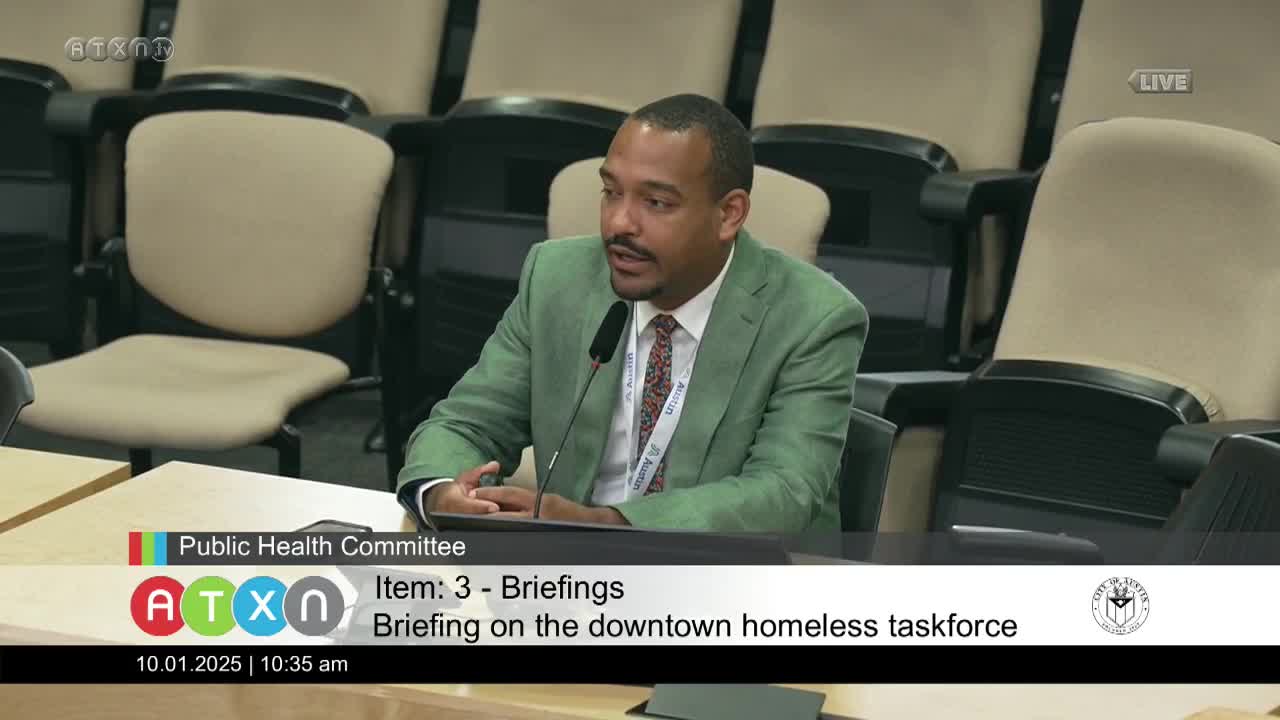Austin Homeless Strategies Office Expands Investment in Prevention and Diversion Services
October 01, 2025 | Austin, Travis County, Texas
This article was created by AI summarizing key points discussed. AI makes mistakes, so for full details and context, please refer to the video of the full meeting. Please report any errors so we can fix them. Report an error »

Austin's Public Health Committee has taken significant steps to address homelessness in the city, focusing on prevention and diversion strategies that aim to keep families stably housed. During a recent meeting, officials highlighted the importance of investing in housing stabilization initiatives, which are designed to mitigate the economic factors contributing to homelessness.
Director David Gray presented a comprehensive overview of the city's homeless prevention and diversion programs, emphasizing their critical role in reducing the inflow of new individuals and families into homelessness. These strategies include emergency rental assistance, utility support, and landlord mediation, all aimed at helping households at imminent risk of losing their homes. By investing in these services, the city aims to minimize the trauma associated with housing loss, particularly for vulnerable populations, including nearly 2,000 students in the Austin Independent School District who are experiencing homelessness.
The committee spotlighted two key programs: the Wayfinder program and the Housing Connector initiative. The Wayfinder program, which has successfully rehoused over 950 individuals since its launch, focuses on quickly assisting those who are housing insecure. With an average cost of just $1,700 per move-in, the program has proven to be a cost-effective solution, with 94 clients remaining stably housed since their transition.
Meanwhile, the Housing Connector program works to increase the availability of rental units for those at risk of homelessness. In its first eight months, it has successfully recruited over 40 properties, totaling approximately 8,000 units, to support families in need. This initiative has significantly reduced the time it takes for households to move into housing, from an average of 400 days to just 15 days.
The committee's discussions underscored a commitment to making homelessness rare, brief, and non-reoccurring, aligning with the city's broader goals of improving community stability and reducing overall system costs. As these programs continue to evolve, they represent a proactive approach to addressing homelessness in Austin, ensuring that families can remain in their homes and communities.
Director David Gray presented a comprehensive overview of the city's homeless prevention and diversion programs, emphasizing their critical role in reducing the inflow of new individuals and families into homelessness. These strategies include emergency rental assistance, utility support, and landlord mediation, all aimed at helping households at imminent risk of losing their homes. By investing in these services, the city aims to minimize the trauma associated with housing loss, particularly for vulnerable populations, including nearly 2,000 students in the Austin Independent School District who are experiencing homelessness.
The committee spotlighted two key programs: the Wayfinder program and the Housing Connector initiative. The Wayfinder program, which has successfully rehoused over 950 individuals since its launch, focuses on quickly assisting those who are housing insecure. With an average cost of just $1,700 per move-in, the program has proven to be a cost-effective solution, with 94 clients remaining stably housed since their transition.
Meanwhile, the Housing Connector program works to increase the availability of rental units for those at risk of homelessness. In its first eight months, it has successfully recruited over 40 properties, totaling approximately 8,000 units, to support families in need. This initiative has significantly reduced the time it takes for households to move into housing, from an average of 400 days to just 15 days.
The committee's discussions underscored a commitment to making homelessness rare, brief, and non-reoccurring, aligning with the city's broader goals of improving community stability and reducing overall system costs. As these programs continue to evolve, they represent a proactive approach to addressing homelessness in Austin, ensuring that families can remain in their homes and communities.
View full meeting
This article is based on a recent meeting—watch the full video and explore the complete transcript for deeper insights into the discussion.
View full meeting
